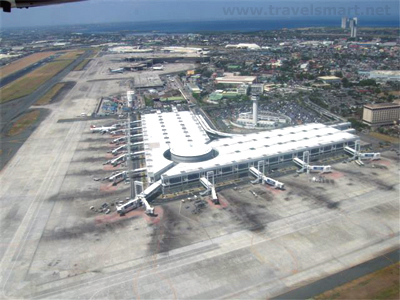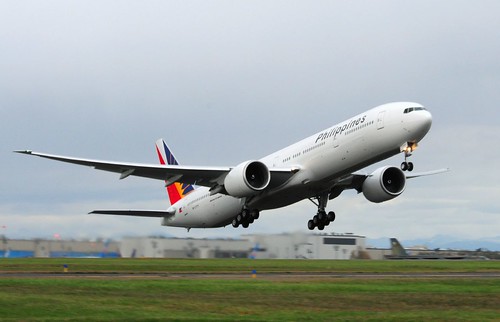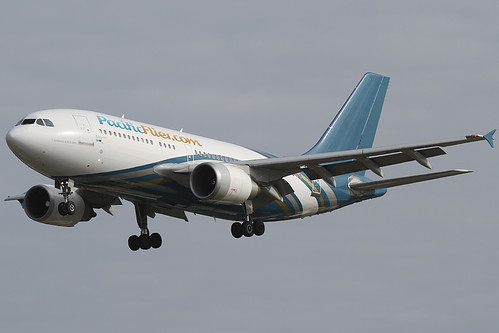A Solomonic Solution Written by Recto L. Mercene
Written by Recto L. MerceneJune 12, 2010

Aviation as a major engine of growth of any developed or developing country has long been accepted as fact. Those countries that consider their aviation sectors as jewels in their economic crown boast of healthy airline revenues, boosted by tourism and related business activities.
We need not look further than our Asian neighbors who have prioritized their airport development and seen the effects on tourist traffic; Hong Kong with 17 million; Bangkok, 14.5 million; Kuala Lumpur, 17 million; Singapore, 9.7 million; Vietnam, 5 million; while Taiwan has 4.4 million, although tourism is not its main strength.
The Philippines has registered a paltry 3.5 million tourists for 2009, according to Manila International Airport Authority (Miaa) general manager Melvin Matibag.
The ProblemFor the last 10 years, the Ninoy Aquino International Airport (Naia) has grappled with a seemingly insoluble problem: How to increase the volume of air traffic in the presence of so-called General Aviation (GenAv) in their midst.
All of the first-class airports that we know of handle only purely commercial traffic or scheduled airlines. Their GenAv, which is composed of privately operated aircraft, charter, air taxi and flying schools, have been relocated away from their main airports, according to Civil Aviation Authority of the Philippines (Caap) director general Alfonso Cusi.
An analogy of mixing GenAv planes with purely commercial jet operations in an airport would be like having a Formula One racing circuit, with cars speeding at 200 kph, and throwing in a jeepney on the same track and allowing it to putt-putt at a leisurely 80 kph to wreck the whole show.
“It is almost embarrassing that this [Naia] is a national airport of the Philippines, and it looks like a provincial airport. It does not look like Singapore, Thailand or Hong Kong,” says Gary Kingshott, a senior adviser of Cebu Pacific.
Kingshsott has been in aviation since 1990 and has worked for various airlines in Australia, India, and now the Philippines. His expertise has always been on the commercial side of the airline, not the operational side.
Looking at the Naia and studying the aircraft movement per hour, he came to the conclusion that the volume of traffic will remain the same, at about 35 aircraft per hour, for as long as GenAv traffic remains mixed with commercial traffic.
“It takes just as long to launch a small aircraft as [it is] to launch a large aircraft,” he said, and seeing the current Naia operations, he concluded that the country is not taking full advantage of its investments in infrastructure.
“In a large Asian country such as the Philippines, you have to think of an airport that can serve the economic need of that country. General aviation is taking up something like 20 percent to 25 percent of all the takeoff and landing slots,” he said.
Actually, the figure is 25 percent to 30 percent, according to Cusi.
Director Willy Borja, chief of Air Traffic Services, said the Naia currently handles 65 percent of all landings and takeoff, while the domestic airport deals with the remaining 35 percent.
For an average total of 553 aircraft movement daily, that translates into 450 aircraft on Naia’s Runway 06-24, and 103 aircraft at the Manila Domestic Airport’s Runway 13-31, home to GenAv operations.
There are 1,800 registered GenAv aircraft in the Philippines as of January 2009, according to Capt. Nestor Pasano, the chief of the Flight Operations Safety Inspections. These include twin-engine executive jets, single-engine trainers, twin-engine prewar planes like the C-45, helicopters and airplanes operated by flying schools.
In 2009 GenAv generated gross revenues of P52 million, according to Matibag. This is a miniscule sum compared with that contributed by commercial airlines. Philippine Airlines and Cebu Pacific alone pay billions of pesos in yearly taxes to the Naia. We have to include some 20 members of the Airline Operators Council (AOC), each contributing an average of P1-million revenue to the Naia’s coffers.
The alternativeTen years ago, because of the traffic congestion at the Naia, the AOC had proposed moving Gen-Av to a further location, such as Santa Rosa, Laguna. The idea was abandoned. As a result, the most feasible and logical airport to relocate Gen-Av is Sangley Point in Cavite. This was the site of a former American fleet of submarine hunters, the P3 Orion airplanes, up until the American bases were still allowed in the country until 1991. Sangley Airport is where the 15th Strike Wing of the Air Force, comprising of OV-10 “Bronco” and MG-520 attack helicopters, is currently based.
Kingshott contends that with GenAV out of the way, it would be easy to increase traffic volume at the Naia, even without a parallel runway, which is the current vogue in the world.
He said Melbourne Airport in Australia has almost the same X-like configuration runway at the Naia, but in the absence of GenAv, it can still handle 30 percent to 40 percent of air traffic.
“La Guardia in New York and San Diego in California are very similar to Manila, but if you look at those airports, you can see a large difference in volumes of traffic being processed,” Kingshott added.
“All successfully managed airports in the world handle purely commercial flights,” Kingshott said, asking a rhetorical question: “When was the last time that Hong Kong allowed a small Cessna plane to land or take off at the Chep Lap Kok Airport? When was the last time Bangkok, Taiwan, Vietnam or Kuala Lumpur permitted a 20-seater airplane to land or take off on their runways?”
It was decades ago, Kingshott answered his own question.
With purely commercial jets in operation, arrivals and departures are geared to maximum capacity of about one aircraft per minute.
At the Naia, however, we could see a B747 “jumbo jet” with a landing speed of about 160 mph, following a lumbering twin-engine C-45, loaded with marine products from the Visayas, landing at a leisurely 60 kph.
The situation is almost laughable but it remains a reality, Kingshott observes.
Unfortunately, upgrading Sangley Point for GenAv use will take time, although at present, the Light Rail Transit from Baclaran is being extended to Bacoor, Cavite. There are also plans to reclaim Manila Bay all the way to Cavite. If ever the matter is pursued, the project can take years before it is realized, according to airport sources.
To be more effective in utilizing its present resources, Kingshott suggests improving the returns from existing assets. “Because if you put in larger aircraft, first of all, you charge the airlines more in takeoff and landing fees.
“Logic tells you that if you can replace an aircraft that carries six people with an aircraft that carries 300 people, it’s a better use of assets.”
He added that “if the landing and takeoff slot is five minutes, what is the maximum value he could get out of those five minutes of runway time?”
“And it takes a six-seater plane sitting on the runway as much time as a big aircraft,” he pointed out.
In Sydney, he said, the authorities there remedied the problem by the “pricing” approach, which involves charging the same amount of landing and takeoff fees, regardless of the aircraft size.
We can already hear the howls of protests from GenAv if the idea is adopted here.
Kingshott suggests to aviation authorities at the Caap and the Naia to do some fact-checking, gather the data and see what would come out of this proposal.
The other idea being bandied about is to transfer the Naia to the Diosdado Macapagal International Airport (Dmia).
Airport sources said this is another long-shot deal, knowing that all the infrastructure needed to connect the Naia to the Dmia is practically nonexistent.
There is no high-speed train, no eight-lane highway, no international passenger and no cargo terminal at the Dmia to handle all the operations currently existing at the Naia.
Former President Ramos, during an interview, said that in his time, he had proposed connecting Naia 3 with a light-rail transit to a proposed Grand Central Terminal at Fort Bonifacio. From there, Naia passengers could simply take a high-speed train to the Dmia, the way passengers in Japan take the Shinkanshen, or bullet train, from Tokyo to Narita Airport in an hour.
Ramos’s idea did not materialize until he left office in 1998.
The other solution forwarded to the Naia was to remove the houses at a portion of the Merville Subdivision, where there used to be space reserved for a runway parallel to the current 06-24.
However, the area reserved for a parallel runway had been taken over by a housing subdivision, and Merville residents would surely not take it sitting down. The government would have to grapple with hundreds of temporary restraining orders from angry residents, Cusi said.
The Solomonic solutionFormer Miaa manager Cusi, meanwhile, is proposing a Solomonic solution.
First, he said that it would be downright impractical and difficult to remove GenAv considering that most of their members are “captains of industry.”
Before and after WWII, these pioneers of Philippine business and industry used their money and talent to map and explore the country’s vast resources, which could be tapped and turned into export products.
We could name minerals, timber, agricultural products, marine products, plywood, hemp, tobacco, sugar, coconut and practically every export products that were successfully developed through the labors and ingenuity of these pioneers.
They mapped the country’s mountains and forests through aerial photographs, built their own private strips, brought in their airplanes for the job, and now we have an extensive GenAv that caters to practically every aspect of our social and cultural life.
Cusi said old family names like Ayala, Soriano, Cojuangco, and newcomers like Tan, Alvarez, Mitra and Enrile, to name a few, would be names to reckon with if someone were to ask the private and corporate aircraft operators to leave their present location at the GenAv compound of the Manila Domestic Airport.
The GenAv hangars here also speak of the country’s who’s who, such as those of the Philippine National Bank, Bangko Sentral ng Pilipinas, Meralco, Aboitiz, PLDT, Banco de Oro, Delta Air and many others.
According to Cusi, commercial aviation and GenAv can coexist, according to his plan.
“I have already made an initial study, and I found out that the present Taxiway 06-24 could be made into a runway parallel to Runway 06-24,” Cusi revealed.
With the same length of 3.5 kilometers, it would simply be a matter of realigning Runway 06-24 so that it would move further south of Taxiway 06-24, so that there would be enough distance between them for an Airbus A380 to land and take off.
When the A380 landed at the Naia a few years ago, other aircraft parked at the time of its touchdown were not allowed to move out because of space constraints.
“There is enough space near the perimeter fence and the Merville Subdivision to move the present Runway 06-26 closer there and, at the same time, strengthen both runways to be able to take in the much bigger and heavier A380,” Cusi noted.
“It would cost about P2 billion and 18 months to build,” Cusi said, adding that he would soon talk with Matibag for a detailed study of his plans.
Maria Lourdes Reyes, the chairman of the AOC, lauded Cusi’s proposal, saying that they would give their full support for such a move to construct parallel runways at the Naia.
Cusi and Matibag were part of the same team that convinced Cebu Pacific to transfer and use the Terminal 3, which is now effectively utilized. However, given the way politics are run here, both airport headmen are at the mercy of the incoming administration. However, even if Cusi’s term as Caap boss is not coterminous with President Arroyo’s since he was appointed with a four-year term to expire in 2014, he said he would still submit a courtesy resignation to the incoming Aquino administration.
 The Civil Aviation Authority of the Philippines has directed Southeast Asian Airlines (SEAIR) to ground all of its LET410 flights due to safety concerns of the aircraft.
The Civil Aviation Authority of the Philippines has directed Southeast Asian Airlines (SEAIR) to ground all of its LET410 flights due to safety concerns of the aircraft. "The CAAP directive, which covers all LET410s operating throughout the Philippines, calls for 15 cabin and aircraft systems safety modifications, the most major and costly of which is the installation of two additional exit doors in each aircraft as shown on the illustration on the left under the wing. LET 410 operators were given three weeks to comply," a company statement said.
"The CAAP directive, which covers all LET410s operating throughout the Philippines, calls for 15 cabin and aircraft systems safety modifications, the most major and costly of which is the installation of two additional exit doors in each aircraft as shown on the illustration on the left under the wing. LET 410 operators were given three weeks to comply," a company statement said. The Civil Aviation Authority of the Philippines has directed Southeast Asian Airlines (SEAIR) to ground all of its LET410 flights due to safety concerns of the aircraft.
The Civil Aviation Authority of the Philippines has directed Southeast Asian Airlines (SEAIR) to ground all of its LET410 flights due to safety concerns of the aircraft. "The CAAP directive, which covers all LET410s operating throughout the Philippines, calls for 15 cabin and aircraft systems safety modifications, the most major and costly of which is the installation of two additional exit doors in each aircraft as shown on the illustration on the left under the wing. LET 410 operators were given three weeks to comply," a company statement said.
"The CAAP directive, which covers all LET410s operating throughout the Philippines, calls for 15 cabin and aircraft systems safety modifications, the most major and costly of which is the installation of two additional exit doors in each aircraft as shown on the illustration on the left under the wing. LET 410 operators were given three weeks to comply," a company statement said.
















